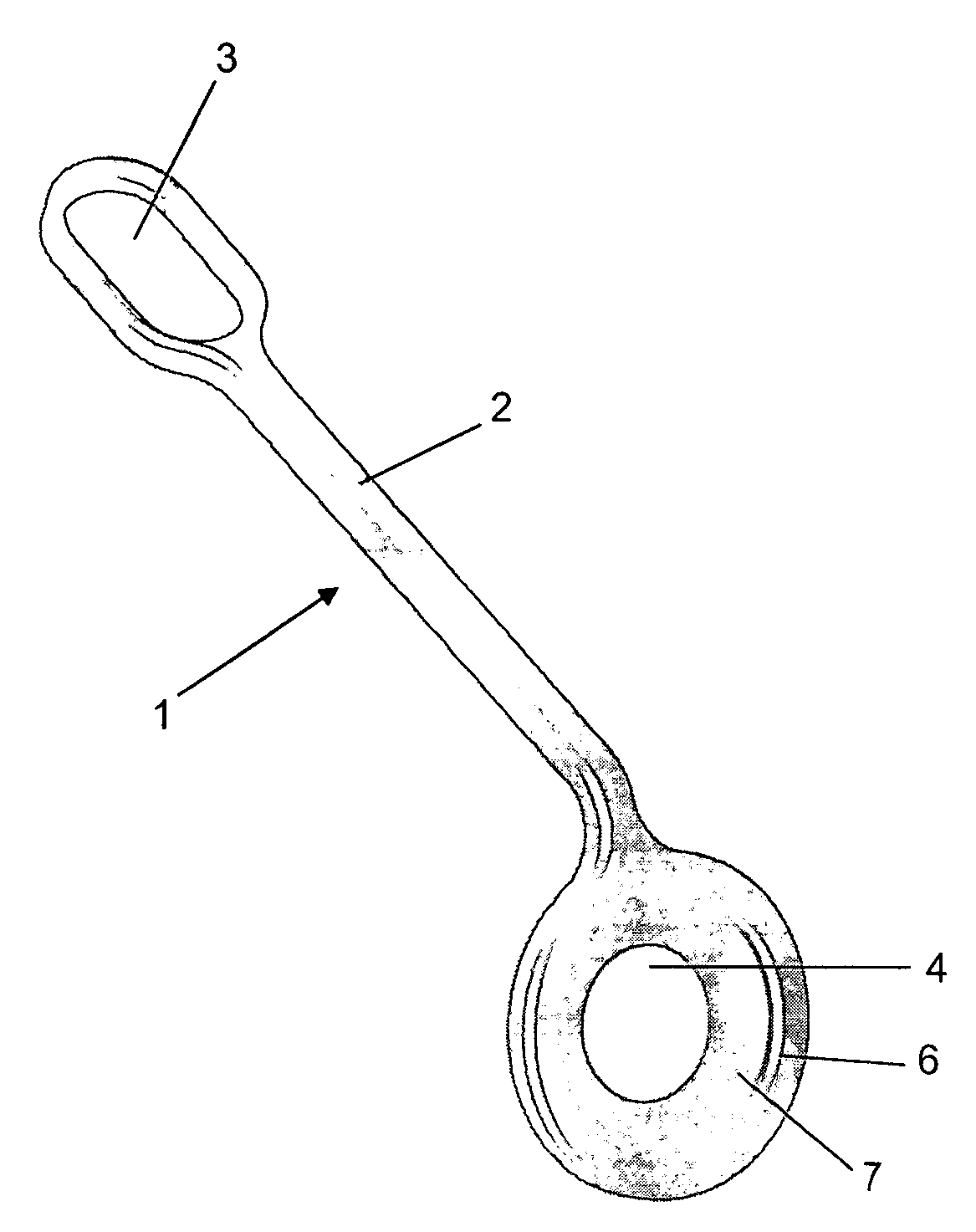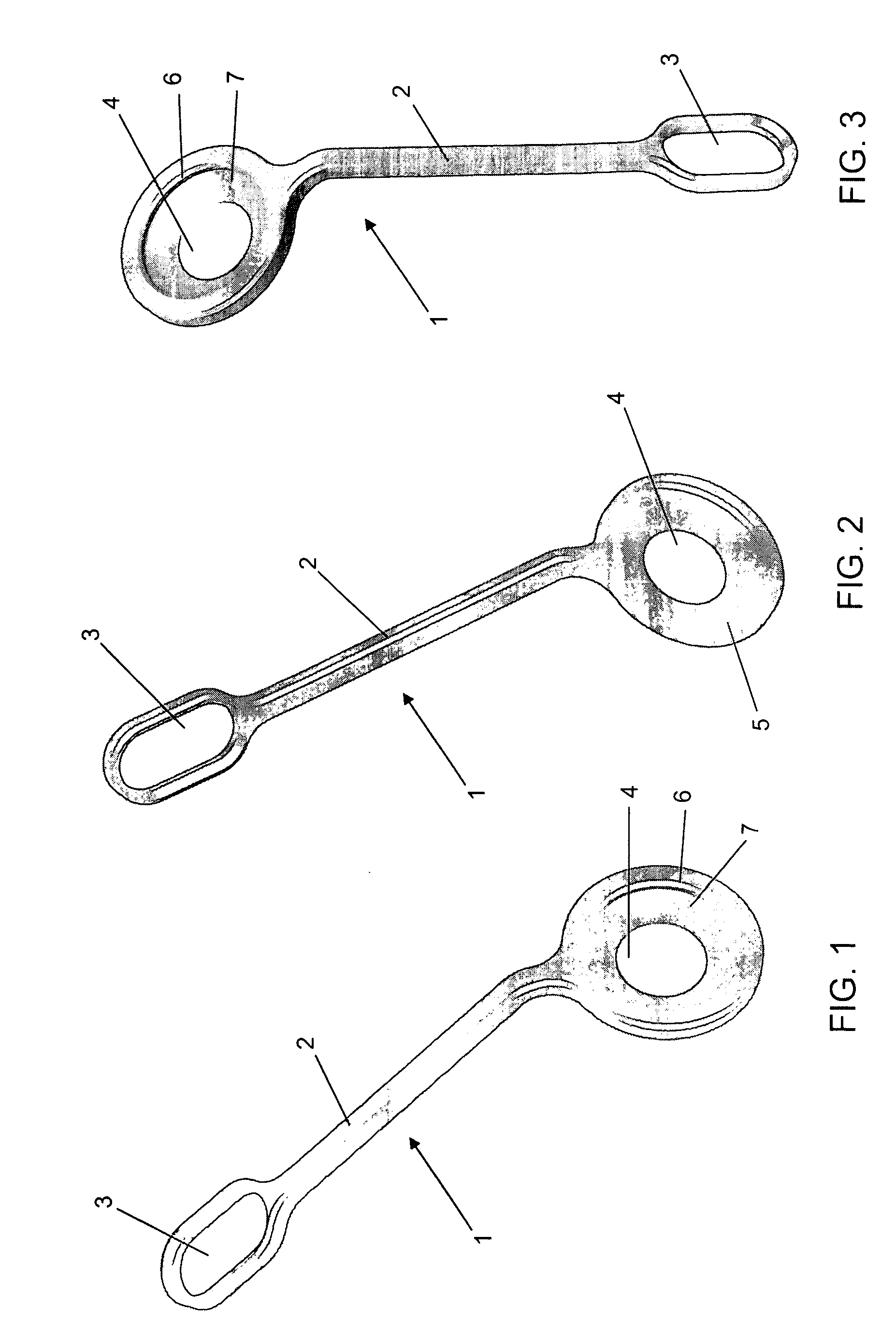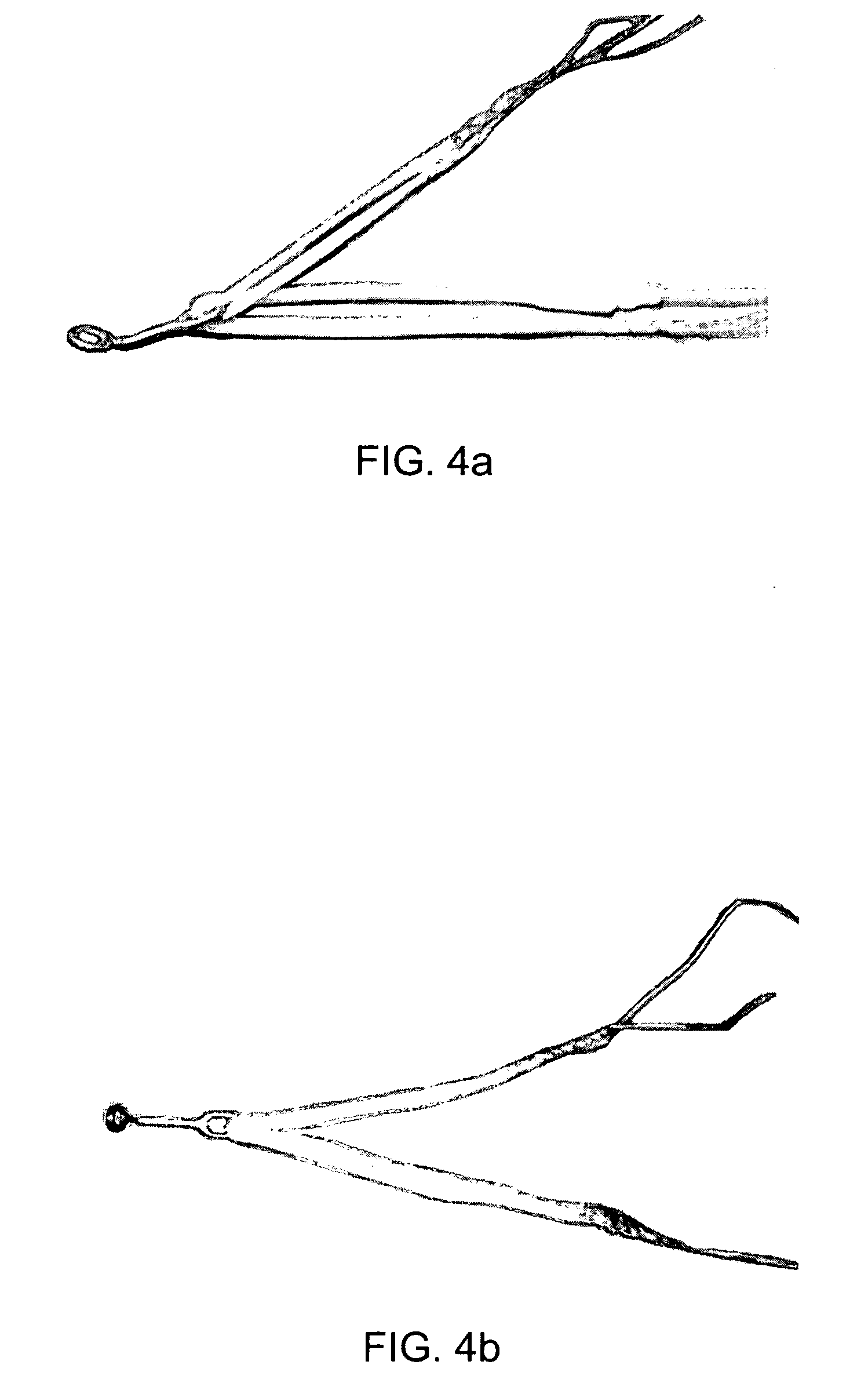Intraosseous fixation device for reconstructing the knee posterior cruciate ligament
a fixation device and knee technology, applied in the field of intraosseous fixation devices for reconstructing the knee posterior cruciate ligament, can solve the problems of inability to repair the tibial fixation, the fixation component may be more problematic, and the pcl ligament rupture is a frequent, so as to avoid salience at the skin level
- Summary
- Abstract
- Description
- Claims
- Application Information
AI Technical Summary
Benefits of technology
Problems solved by technology
Method used
Image
Examples
Embodiment Construction
[0035] According to these drawings and their details, more particularly FIGS. 1, 2 and 3, the present invention, the intraosseous fixation device for reconstructing the knee posterior cruciate ligament of this invention is characterized in that it comprises a monoblock body (1), made of titanium, formed by a rod (2) that, by one end, is widened to form a tab (3) being a point to receive the double semitendinosus and gracilis cross graft, while, in the opposite side, said rod is integrated to an eyelet (4) having a cooperating geometry to receive the low profile cortical screw and cooperating so that this end is fixated to in the tibia.
[0036] The rod (2) shows a preferably quadrangular cross section with all corners being rounded and chamfered, this also occurring with the tab (3) and the eyelet (4).
[0037] The size of rod (2) ranges from 40 to 50 mm in length independently of its thickness and height.
[0038] The tab (3) is coplanar relative to rod (2), also having a preferably elon...
PUM
 Login to View More
Login to View More Abstract
Description
Claims
Application Information
 Login to View More
Login to View More - R&D
- Intellectual Property
- Life Sciences
- Materials
- Tech Scout
- Unparalleled Data Quality
- Higher Quality Content
- 60% Fewer Hallucinations
Browse by: Latest US Patents, China's latest patents, Technical Efficacy Thesaurus, Application Domain, Technology Topic, Popular Technical Reports.
© 2025 PatSnap. All rights reserved.Legal|Privacy policy|Modern Slavery Act Transparency Statement|Sitemap|About US| Contact US: help@patsnap.com



